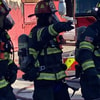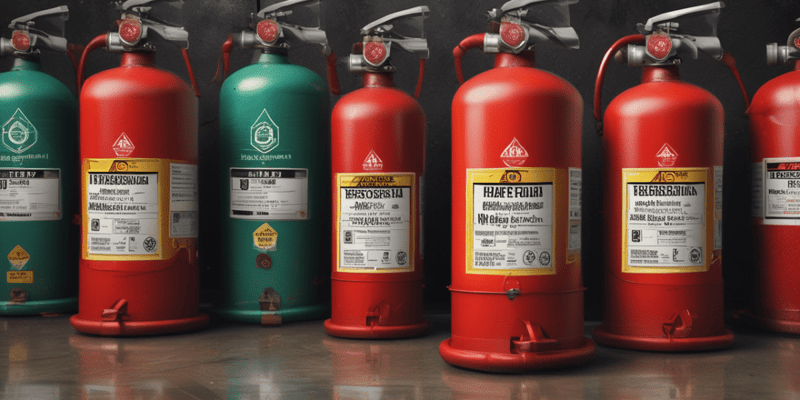Questions and Answers
What are some factors that influence the design options to meet code requirements?
Insurance and Hazard analysis
What is the main concern about bringing the AHJ (Authority Having Jurisdiction) or the Local Fire Marshal in early?
Fear of first responders
Which document provides a good description of options for protection, although it is not retroactive?
Addenda 'C'
What is the purpose of a tiered approach to Fire System Addenda?
Signup and view all the answers
Which type of system is known for being an early warning system, albeit at extra cost?
Signup and view all the answers
What is the benefit of using Water Mist/Hybrid systems?
Signup and view all the answers
What is a risk-based hazard for electrical systems?
Signup and view all the answers
What does a system design based on reasonably anticipated events aim to achieve?
Signup and view all the answers
Why is it important to consider life safety in relation to electrical hazards?
Signup and view all the answers
What was the target year for NFPA publication regarding NFPA 855?
Signup and view all the answers
What is NFPA 850 and how is it related to NFPA 855?
Signup and view all the answers
Why is it mentioned that turning off the hazard does not eliminate it?
Signup and view all the answers
What type of hazard classification is applied to fire areas in telecommunication buildings with lead-acid and nickel-cadmium battery systems operating at lower than 50-V ac, 60-V dc nominal?
Signup and view all the answers
Under what circumstances can fire areas in non-dedicated use buildings containing ESS exceeding certain amounts be treated as an ordinary hazard?
Signup and view all the answers
What types of outdoor ESS installations can be permitted based on a hazardous mitigation analysis and large-scale testing?
Signup and view all the answers
How is the total aggregate quantities of energy systems determined when a combination of systems are present?
Signup and view all the answers
What action is required if the sum of the percentages calculated in determining total aggregate quantities exceeds 100 percent?
Signup and view all the answers
What section of the document specifies the requirements for large-scale fire and fault condition testing?
Signup and view all the answers
Study Notes
Fire Hazard Classification
- Fire areas in telecommunication buildings with lead-acid and nickel-cadmium battery systems operating at lower than 50-V ac, 60-V dc nominal are considered ordinary hazard.
- Fire areas in non-dedicated use buildings containing Energy Storage Systems (ESS) that exceed the amounts in Table 4.5 can be treated as an ordinary hazard based on a hazardous mitigation analysis and large-scale fire and fault condition testing.
Protection Features and Code Requirements
- NFPA, UL, and FM codes apply to ESS installations.
- Protection features should be guided by insurance and hazard analysis.
- A tiered approach to fire system addenda can provide options for protection.
- Clean Agent systems are a possible option for fire suppression.
Fire Suppression Products
- Types of fire suppression products include:
- Clean Agent systems
- CO2 systems
- Mist/Hybrid systems
- Stat-x Aerosol
- Novec
- FM200
- CO2 (least expensive)
- Mist (most dangerous)
- Relative costs of suppression products vary.
NFPA 855 - Energy Storage Systems (ESS)
- NFPA 855 is a standard for Energy Storage Systems (ESS).
- The code cycle is ongoing, with a target publication date of 2019.
- The code will be a requirement or a shall code, possibly conflicting with existing utility-based property codes.
- NFPA 855 will provide guidelines for the design, installation, and operation of ESS.
Risk-Based Approach
- A risk-based approach to ESS design and installation is recommended.
- The approach is based on reasonably anticipated events to control the fire until an informed party can determine the next course of action.
- Electrical hazards and deep-seated fire detection vs suppression are important considerations.
Life Safety and First Responders
- Life safety and first responders are key concerns in ESS design and installation.
- Turning off the ESS does not eliminate the hazard.
- The code cycle is ongoing, with a focus on life safety and first responders.
Studying That Suits You
Use AI to generate personalized quizzes and flashcards to suit your learning preferences.
Description
Test your knowledge on the classification of fire areas in telecommunication buildings and non-dedicated use buildings according to NFPA 76 standards, especially when it comes to battery systems and ESS exceeding specified amounts.





